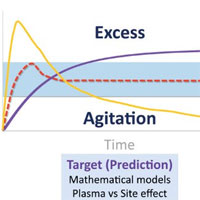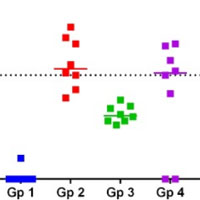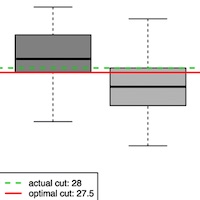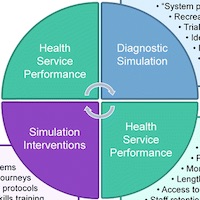
Pretreating red blood cells with nitric oxide may reduce side effect linked to transfusions
A new treatment may diminish a dangerous side effect associated with transfusions of red blood cells (RBCs) known as pulmonary hypertension, an elevated blood pressure in the lungs and heart that can lead to heart failure.... read more

Sedation in the ICU – Good Past – Better Future?
The concepts for good sedation include defining the range of sedation, the need for agents with rapid response that can be easily and rapidly varied in restless and confused patients, various modes of ventilation, continuous... read more

Closed Chest Compressions in Traumatic Cardiac Arrest
This study demonstrated that fluid resuscitation with whole blood is significantly better than resuscitation with compressions alone or with normal saline. It further showed that there was no difference between whole blood... read more

An evaluation of the Swiss staging model for hypothermia using hospital cases and case reports from the literature
The Swiss staging model for hypothermia uses clinical indicators to stage hypothermia and guide the management of hypothermic patients. The proposed temperature range for clinical stage 1 is ... read more

Reversal of Oral Anticoagulation in Patients with Acute Intracerebral Hemorrhage
In light of an aging population with increased cardiovascular comorbidity, the use of oral anticoagulation (OAC) is steadily expanding. A variety of pharmacological alternatives to vitamin K antagonists (VKA) have emerged... read more

Pediatric Hypertension and Hypertensive Emergencies: Recognition and Management in the Emergency Department
Pediatric hypertension generally presents to the ED in 2 forms: (1) the otherwise asymptomatic child with elevated blood pressure, and (2) the child with a true hypertensive emergency. This issue provides recommendations... read more

Approaches to Addressing PICS Among ICU Survivors
Critical illness can be lethal and devastating to survivors. Improvements in acute care have increased the number of intensive care unit (ICU) survivors. These survivors confront a range of new or worsened health states that... read more

Reproducibility Trial Publishes Two Conclusions For One Paper
The British Journal of Anaesthesia's unusual experiment is designed to broaden replicability efforts beyond just methods and results. How deeply an anaesthetist should sedate an elderly person when they have surgery is... read more

The Epidemiology of Symptomatic Catheter-associated Urinary Tract Infections in the ICU
Catheter-associated urinary tract infection (CAUTI) occurs frequently in critical illness with significant morbidity, mortality, and additional hospital costs. The epidemiology of symptomatic ward-acquired CAUTI (within 48... read more

Disease History to Predict Mortality Risk in ICU Patients
Patients in the intensive care unit are highly heterogeneous, and include elderly patients who generally have a long history of disease. Prediction of prognosis can often be difficult because of the severity of patient illness... read more

Diaphragm-protective Mechanical Ventilation
Diaphragm dysfunction is common in mechanically ventilated patients and predisposes them to prolonged ventilator dependence and poor clinical outcomes. Mechanical ventilation is a major cause of diaphragm dysfunction in these... read more

Alternatives to Rapid Sequence Intubation: Contemporary Airway Management with Ketamine
Endotracheal intubation (ETI) is a high-risk procedure commonly performed in emergency medicine, critical care, and the prehospital setting. Traditional rapid sequence intubation (RSI), the simultaneous administration of... read more

Translational Simulation: Not “Where?” But “Why?” A Functional View of In SITU Simulation
Healthcare simulation has been widely adopted for health professional education at all stages of training and practice and across cognitive, procedural, communication and teamwork domains. Recent enthusiasm for in situ simulation—delivered... read more

Impact of Mean Arterial Pressure Fluctuation on Mortality in Critically Ill Patients
The purpose of this study was to investigate the association between mean arterial pressure fluctuations and mortality in critically ill patients admitted to the ICU. The reduced mean arterial pressure fluctuation (within... read more






